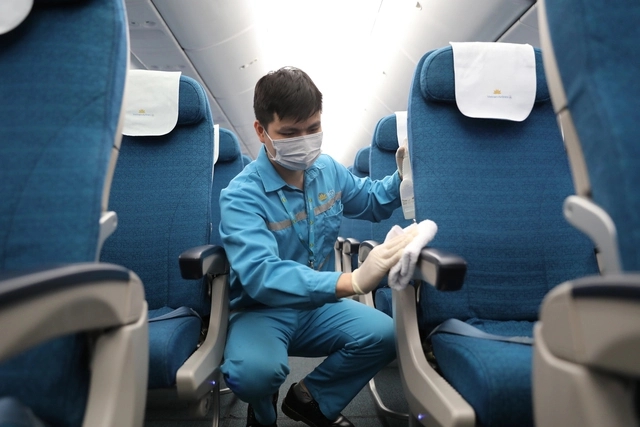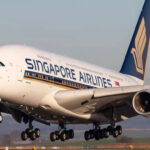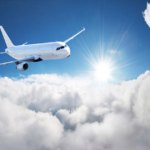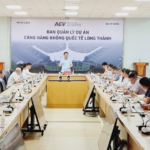Vietnam Airlines announced on April 30, 2025, that its revenue for the first quarter of 2025 exceeded VND 31,100 billion (nearly USD 1.2 billion), an 11% increase compared to the same period in 2024. This means that in the first three months of 2025, the airline generated a daily revenue of over VND 345 billion.
This is the fifth consecutive quarter that Vietnam Airlines has maintained revenue around USD 1 billion. Consolidated pre-tax profits are estimated at VND 3,625 billion, with the parent company earning VND 3,044 billion.
The demand for domestic and international travel has significantly contributed to the airline’s billion-dollar revenue. One of the key contributors to this success is a golden strategy that keeps customers coming back.
What is it?
Aircraft Cleaning: The Key to Achieving 5-Star Service Quality
In the highly competitive aviation industry, where it’s not just about ticket prices or flight routes, Vietnam Airlines has focused on something seemingly small but makes a huge difference: Cleanliness.
In other words, aircraft cleaning is one of the secrets to the airline’s pursuit of 5-star service quality.
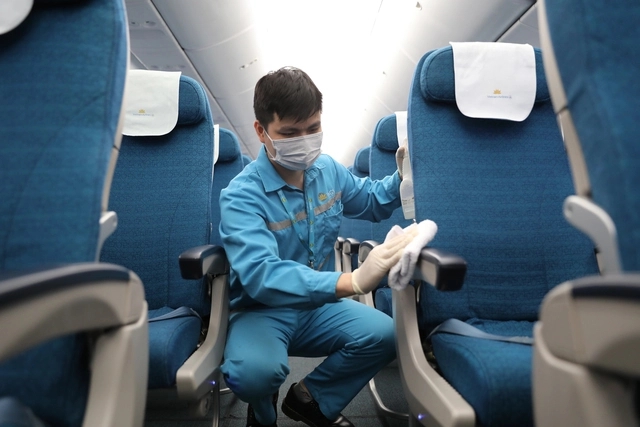
Photo: Vietnam Airlines
Numerous global surveys have indicated that aircraft cleanliness significantly impacts passenger satisfaction and their choice of an airline. According to research, about 80% of frequent flyers consider cleanliness one of the most important criteria when choosing an airline. This reveals a clear trend: Maintaining aircraft cleanliness not only enhances the passenger experience but also directly influences their service usage behavior.
Aircraft cleaning not only directly impacts the in-flight experience of passengers but also contributes to operational safety and prolongs the lifespan of the aircraft and its components.
01. Each aircraft, after landing, is thoroughly inspected and cleaned by a dedicated team of cleaning staff, from the passenger cabin, seats, and windows to areas like the lavatories and galleys. This process not only ensures cleanliness but also creates a comfortable and pleasant environment, enhancing the airline’s brand image in the eyes of its customers.
Aviation consulting firm Sofema Aviation Services (Bulgaria) states that proper cleaning reduces the risk of transmitting infectious diseases, including the common cold, flu, and more severe illnesses like COVID-19.
Moreover, regular cleaning helps protect the aircraft’s interior. The premium leather seats, entertainment screens, and frequently touched surfaces are treated with specialized cleaning products, ensuring not only cleanliness but also long-lasting beauty.
This not only provides aesthetic value but also helps Vietnam Airlines save on maintenance and equipment replacement costs.
02. Going beyond cabin beautification, Vietnam Airlines’ aircraft cleaning plays a crucial role in maintaining the efficiency of technical components.
Engines, propellers, and external parts of the aircraft are periodically inspected and cleaned to remove dirt, insects, and debris that may affect their performance. A clean engine not only operates more efficiently but also reduces the risk of malfunctions, thereby prolonging its lifespan and ensuring safety on every flight.
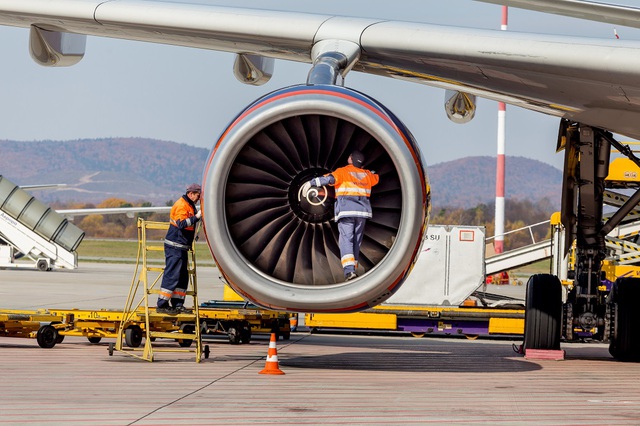
Illustrative image. Aeroflot
The technical cleaning process demands precision and expertise. The team of technicians is well-trained to perform complex tasks, from inspecting small crevices on the aircraft’s exterior to cleaning critical components like jet engines.
A clean aircraft exterior contributes to optimal performance, including aerodynamic efficiency and improved visibility for ground crew.
03. Furthermore, as the global aviation industry increasingly emphasizes sustainability, Vietnam Airlines’ aircraft cleaning demonstrates environmental responsibility. The airline uses eco-friendly cleaning products and adopts resource-efficient cleaning methods, reducing its ecological footprint.
“Implementing service standards requires a trial process to ensure effectiveness and avoid pressure. Standards must be flexible according to different routes and varying amounts of waste. Our main objective is to optimize our work and provide maximum comfort to our customers. For example, we aim to optimize in-flight meals to reduce waste and equip our flight attendants and ground staff with tools to enhance cleaning efficiency” – said Ms. Tran Thanh Ha, Deputy Head of In-Flight Services, Passenger Services Department, Vietnam Airlines.
The focus on aircraft cleaning exemplifies Vietnam Airlines’ operating philosophy: Perfection lies in the smallest details. This is the key to winning over customers, especially those seeking a premium flying experience. A clean and well-maintained aircraft, both at takeoff and landing, is akin to a professional greeting to customers worldwide.
The $500 Million Inter-Port Traffic Contract for Long Thanh Airport is Delayed.
The $4.8 billion Intra-Airport Transportation Package project at Long Thanh Airport is facing delays due to a shortage of machinery, labor, and challenging construction conditions. With a massive scope and tight deadlines, this project demands exceptional efficiency and expertise to get back on track.

